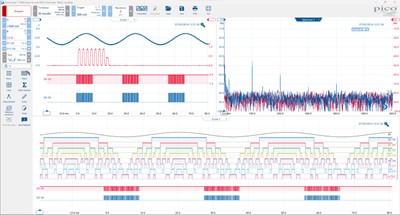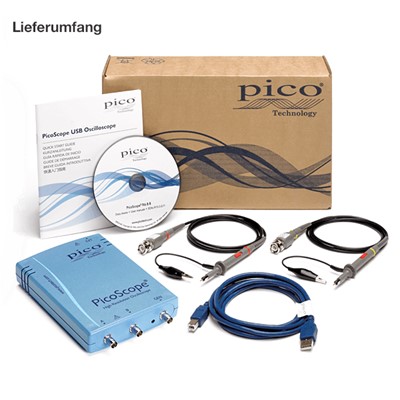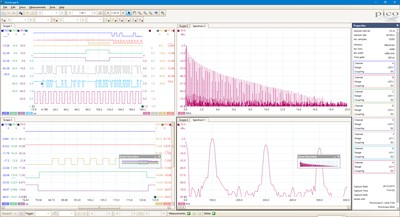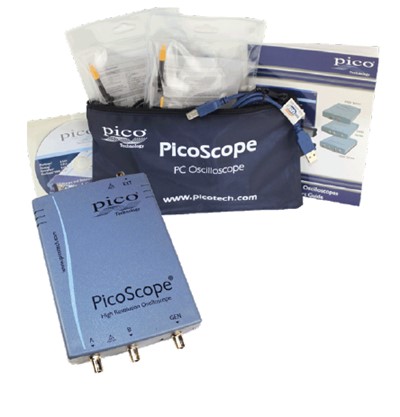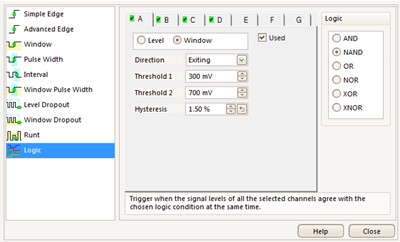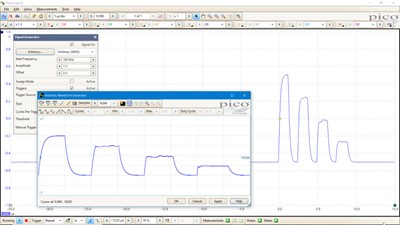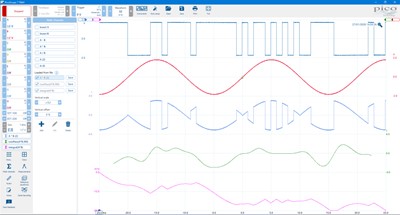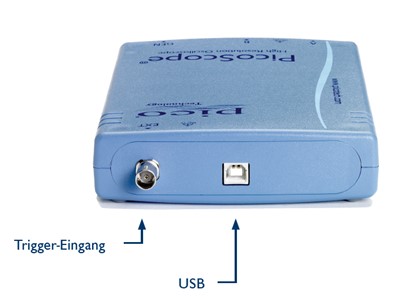Request Demo Device
This allows you to test and evaluate the product under real conditions before making a purchase decision
The following conditions apply:
1. Return Obligation
At the end of the test period (2 weeks), the demo device must be returned unsolicited and at the customer's expense in perfect condition, including accessories and packaging, as an insured package.
2. Liability for Damage / Loss
During the test phase, the customer is liable for loss of or damage to the device and the accessories supplied.
3. No Transfer to Third Parties
The demo unit may not be transferred or rented to third parties.
4. For Testing Only – No Permanent Loan
The unit is provided strictly for testing and evaluation purposes. Use in continuous operation, productive environments, or resale is not permitted.
5. Subject to Availability
Demo units are provided free of obligation and subject to availability. There is no legal claim to receiving a demo unit.
6. One-Time Demo per Product/Customer
As a rule, only one demo unit per product and customer is provided.
Best Price Guarantee
Send us the supplier's written offer or the website where the product is offered at a lower price to benefit from this guarantee.
The best price guarantee does not apply to offers from remaining stock or excess stock or to offers from countries outside the EU.
Pico Technology USB PC oscilloscope PicoScope 4262
Most digital oscilloscopes have been designed for viewing fast digital signals. The trend has been to use new technology solely to increase sampling rate and bandwidth. With the PicoScope 4262, however, the focus is set on what’s important for measuring analog signals: increasing the resolution, improving dynamic range, and reducing noise and distortion.
The result is an oscilloscope / FFT analyzer that has a level of performance to put most audio analyzers to shame yet has a 5 MHz bandwidth making it equally suitable for vibration and ultrasound signals as well as a wide range of precision measurement tasks.
Many applications such as vibration analysis require long captures at high sampling rates, which requires a deep capture memory. The PicoScope 4262 has a 16 million sample buffer memory so can capture at 10 MS/s for timebases as long as 100 ms/div. If you require longer times, the USB streaming mode can sample directly into PC memory.
The most important performance data:
- Low noise
- Two channels
- 16 MSa buffer
- 16-bit resolution
- 10 MSa/s sampling
- 5 MHz bandwidth
- Advanced digital triggers
- Low-distortion signal generator
- Arbitrary waveform generator
- USB powered
Most digital oscilloscopes have been designed for viewing fast digital signals. The trend has been to use new technology solely to increase sampling rate and bandwidth. With the PicoScope 4262, however, we have focused on what’s important for measuring analog signals: increasing the resolution, improving dynamic range, and reducing noise and distortion.
The result is an oscilloscope / FFT analyzer that has a level of performance to put most audio analyzers to shame yet has a 5 MHz bandwidth making it equally suitable for vibration and ultrasound signals as well as a wide range of precision measurement tasks.
Many applications such as vibration analysis require long captures at high sampling rates, which requires a deep capture memory. The PicoScope 4262 has a 16 million sample buffer memory so can capture at 10 MS/s for timebases as long as 100 ms/div. If you require longer times, the USB streaming mode can sample directly into PC memory.
Model >> | PicoScope 4262 |
|---|---|
| Channels (Input) | 2 |
| Bandwidth ±20 mV range ±10 mV range | 5 MHz 4 MHz 3 MHz |
| Rise time ±20 mV range ±10 mV range | 70 ns 88 ns 117 ns |
| Buffer memory | 16 MSa |
| SFDR | up to 70 dB |
| Vertical resolution | 16 bits |
| Input characteristics | 1 MΩ ±2%, 15 pF ±2 pF |
| Connector type | BNC |
Advanced Display
One of the biggest differences between using a PicoScope and a benchtop scope is the display. The PicoScope 6 software can display up to 16 scope and spectrum views at once, making comparisons and analysis even clearer. The split-screen display can be customized to show whichever combination of waveforms you need, to display multiple channels or different variants of the same signal. Additionally, each waveform shown works with individual zoom, pan, and filter settings for ultimate flexibility. Alongside the facility to use monitors many times larger than a fixed scope display, these are further reasons to choose a USB oscilloscope.
The PicoScope software can be controlled by mouse, touchscreen or keyboard shortcuts.
Full-featured
The PicoScope 4262 is a full-featured oscilloscope, with a function generator and arbitrary waveform generator that includes a sweep function to enable frequency response analysis. It also offers mask limit testing, math and reference channels, advanced digital triggering, serial decoding, automatic measurements and color persistence display.
Designed for the analog world
When used in spectrum analyzer mode, the scope provides a menu of eleven automatic frequency-domain measurements such as IMD, THD, SFDR and SNR. Its performance is so good that it rivals many dedicated audio analyzers and dynamic signal analyzers costing several times the price. Most digital oscilloscopes have been designed for viewing fast digital signals. The trend has been to use new technology solely to increase sampling rate and bandwidth. With the PicoScope 4262 the focus is set on what’s important for measuring analogue signals: increasing the resolution, improving dynamic range, and reducing noise and distortion.
All-inclusive
Buying a PicoScope is not like making a purchase from other oscilloscope companies, where optional extras considerably increase the price.
With our scopes, high-end features such as serial decoding, mask limit testing, advanced math channels, segmented memory and a signal generator are all included in the price.
If a new project you are working on would benefit from a feature such as CAN bus decoding or mask limit testing, often it costs less to buy a new PicoScope than to pay to enable the option on a benchtop.
Waveform buffer and navigator
Ever spotted a glitch on a waveform, but by the time you’ve stopped the scope it has gone? With PicoScope you no longer need to worry about missing glitches or other transient events. PicoScope can store the last ten thousand oscilloscope or spectrum waveforms in its circular waveform buffer.
The buffer navigator provides an efficient way of navigating and searching through waveforms, effectively letting you turn back time. Tools such as mask limit testing can also be used to scan through each waveform in the buffer looking for mask violations.
Digital triggering
The majority of digital oscilloscopes still use an analog trigger architecture based on comparators. This causes time and amplitude errors that cannot always be calibrated out and often limits the trigger sensitivity at high bandwidths.
In 1991 Pico pioneered the use of fully digital triggering using the actual digitized data. This technique reduces trigger errors and allows our oscilloscopes to trigger on the smallest signals, even at the full bandwidth. Trigger levels and hysteresis can be set with high precision and resolution.
The reduced rearm delay provided by digital triggering, together with segmented memory, allows the capture of events that happen in rapid sequence. On many of our products, rapid triggering can capture a new waveform every microsecond until the buffer is full.
Advanced triggers As well as the standard range of triggers found on most oscilloscopes, the PicoScope 4000A Series has a comprehensive set of advanced triggers built in to help you capture the data you need. These include pulse width, windowed, and dropout triggers to help you find and capture your signal quickly
Arbitrary waveform generator (AWG) and function generator
The 16-bit arbitrary waveform generator (AWG) with 192 kSa/s can be used to emulate missing sensor signals during product development or to stress test a design over the entire intended operating range. Waveforms can be imported from data files or created and modified using the built-in graphical AWG editor.
A function generator is also included, with sine, square, and triangle waves up to 1 MHz, along with DC level, white noise, and many more standard waveforms. As well as level, offset and frequency controls, advanced options allow you to sweep over a range of frequencies. Combined with the spectrum peak hold option, this creates a powerful tool for testing amplifier and filter responses.
Download new features or write your own
The software development kit (SDK) allows you to write your own software and includes drivers for Microsoft Windows, Apple Mac (OS X) and Linux (including Raspberry Pi and BeagleBone).
Example code shows how to interface to third-party software packages such as Microsoft Excel, National Instruments LabVIEW and MathWorks MATLAB.
There is also an active community of PicoScope users who share code and applications on the Pico forum and PicoApps section of the picotech.com web site.
Example code, hosted on the Pico Technology GitHub pages, shows how to interface to third-party software packages such as Microsoft Excel, National Instruments LabVIEW and MathWorks MATLAB and programming languages including:
- C
- C++
- C#
- Visual Basic .NET The drivers support USB data streaming, a mode that captures gap-free continuous data over USB direct to the PC’s RAM or hard disk at rates of up to 156.25 MS/s for USB 3.0 devices. Capture size is limited only by available PC storage. Sampling rates in streaming mode are subject to PC specifications, product specifications and application loading.
Math channels and filters
On many oscilloscopes waveform math just means simple calculations such as A + B. With a PicoScope it means much, much more.
With PicoScope software you can select simple functions such as addition and inversion, or open the equation editor to create complex functions involving filters (lowpass, highpass, bandpass and bandstop filters), trigonometry, exponentials, logarithms, statistics, integrals and derivatives.
Waveform math also allows you to plot live signals alongside historic peak, averaged or filtered waveforms.
You can also use math channels to reveal new details in complex signals. An example would be to graph the changing duty cycle or frequency of your signal over time.
Common
Price
Article Group
Manufacturer
Best Price Guarantee
Send us the supplier's written offer or the website where the product is offered at a lower price to benefit from this guarantee.
The best price guarantee does not apply to offers from remaining stock or excess stock or to offers from countries outside the EU.
Request Demo Device
This allows you to test and evaluate the product under real conditions before making a purchase decision
1. Return Obligation
At the end of the test period (2 weeks), the demo device must be returned unsolicited and at the customer's expense in perfect condition, including accessories and packaging, as an insured package.
2. Liability for Damage / Loss
During the test phase, the customer is liable for loss of or damage to the device and the accessories supplied.
3. No Transfer to Third Parties
The demo unit may not be transferred or rented to third parties.
4. For Testing Only – No Permanent Loan
The unit is provided strictly for testing and evaluation purposes. Use in continuous operation, productive environments, or resale is not permitted.
5. Subject to Availability
Demo units are provided free of obligation and subject to availability. There is no legal claim to receiving a demo unit.
6. One-Time Demo per Product/Customer
As a rule, only one demo unit per product and customer is provided.
Downloads
Datasheet
Ficha Técnica PicoScope 4262
Language: German, Spain
Version: MM030.es-6
File Size: 2.82 MiB
Release Date: 16.07.2021
Fiche Technique du PicoScope 4262
Language: French
Version: MM030.fr-6
File Size: 2.81 MiB
Release Date: 17.06.2021
PicoScope 4262, data sheet
Language: English
Version: MM030.en-10
File Size: 2.51 MiB
Release Date: 23.05.2021
functions and specifications
PicoScope 4262, data sheet
Language: German
Version: MM030.de-6
File Size: 2.85 MiB
Release Date: 23.05.2021
functions and specifications
Scheda tecnica PicoScope 4262
Language: Italian
Version: MM030.it-7
File Size: 2.72 MiB
Release Date: 16.07.2021
Manual
PicoScope 4000 series, users guide
Language: English
Version: ps4000a.en-9
File Size: 1.91 MiB
Release Date: 23.05.2021
PicoScope 4000 series, users guide
Language: German
Version: ps4000.de.r6
File Size: 2.08 MiB
Release Date: 23.05.2014
PicoScope USB oscilloscopes, quick start guide
Language: German, English, Chinese, Spain, French, Italian
File Size: 4.87 MiB
Release Date: 24.08.2022
Software
PicoScope 7 Software users guide
Language: English
Version: psw7.en-1
File Size: 59.37 MiB
Release Date: 07.05.2025
PicoScope 7 is the oscilloscope software that is available for all PicoScope® oscilloscopes. There are versions for Windows, macOS and Linux. All the advertised features are included in the purchase price of your oscilloscope, so there are no expensive add-on software modules to buy later.
Guide
Triggering a PicoScope signal generator using the PicoScope API functions
Language: English
File Size: 192.42 KiB
Release Date: 12.08.2019


